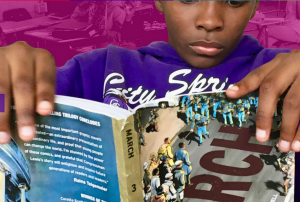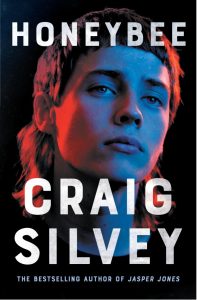What is diverse children’s literature?
 Why do hashtags like #weneeddiverse books and #ownvoices feature so much in recent blurbs on children’s books? For most scholars, librarians and book people, diversity is related to reflecting and affirming the lived experience of readers from marginalized groups. This means young people from different ethnicities, neuro- and gender-diverse identities, and so on. These readers don’t see themselves portrayed in books as often as other Australians.
Why do hashtags like #weneeddiverse books and #ownvoices feature so much in recent blurbs on children’s books? For most scholars, librarians and book people, diversity is related to reflecting and affirming the lived experience of readers from marginalized groups. This means young people from different ethnicities, neuro- and gender-diverse identities, and so on. These readers don’t see themselves portrayed in books as often as other Australians.
This is a problem because people depend on the feedback of society in order to give them social and psychological validation. In a nutshell, everyone needs to see themselves reflected in popular culture in order to feel they are included as citizens. This idea lies behind the Australian Broadcasting Corporation’s Charter, requiring the ABC to broadcast programs that ‘contribute to a sense of national identity’ and that ‘reflect the cultural diversity of the Australian community’.
In children’s and young adult publishing and book culture, a shorthand for some of these ideas about representation and social inclusion is found in the #ownvoices movement. The hashtag originated on Twitter in 2015. Its creator, Corinne Duyvis, advocated use of the hashtag to recommend works featuring the authentic voices of diverse authors. #ownvoices is now used by the book industry to signal that an author is writing in the first person – the most common narrative stance in contemporary YA fiction – from their personal experience as a member of a marginalized identity group.

Not everyone agrees that #ownvoices is a good thing. Many authors and reviewers see it as a kind of identity policing that is detrimental to literary quality and free expression. They argue that imagining different kinds of experience is core to what authors do, and that it is how well they write, rather than what they write about, that is important. A good, sensitively told story about trans youth experience, they suggest, could be written by a straight white man, as defenders of Craig Silvey’s 2020 novel Honeybee suggest. Detractors of the book, on the other hand, interpret it as the literary equivalence of black-face in the performing arts, subjecting gender diverse readers to trauma porn, and shallow, stereotyped, characterization.
So how do publishers decide how far to go in being ‘allies’, in positively discriminating in favour of #ownvoices writers? The Cultural Pathway to Reading project’s interviews with Australian YA publishers record a desire to be acquire and promote more diverse children’s fiction, particularly by Indigenous writers. At the end of the day, however, publishers need to sell a quantity of copies that can financially sustain publication. The preference for a more generic ‘Australian’ story with cross-over appeal to a range of potential readers is a compelling economic argument in a small and lean market.